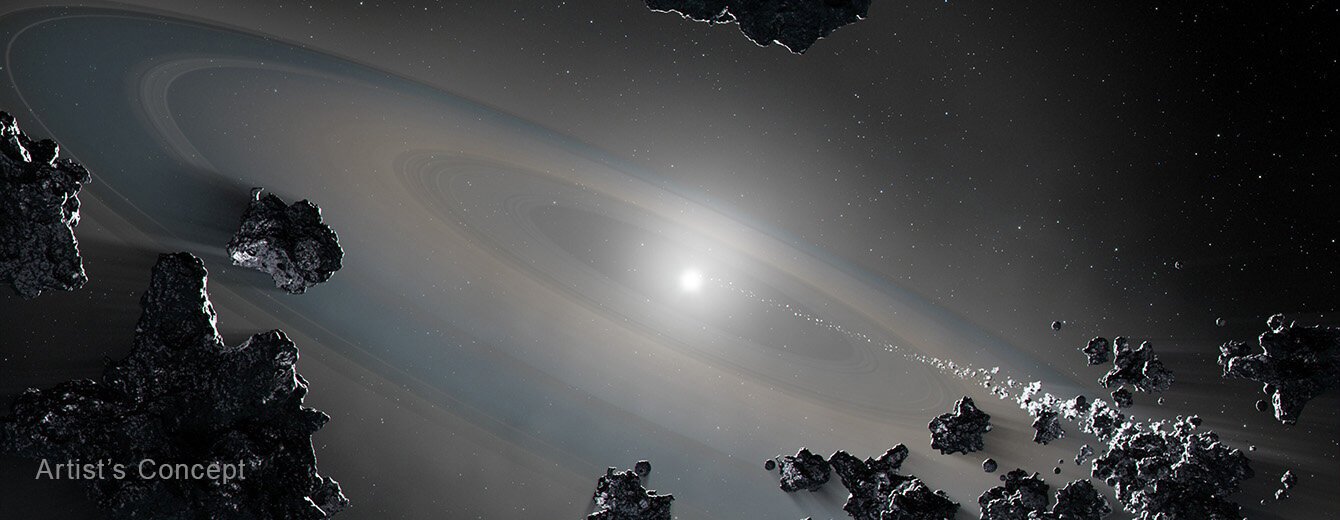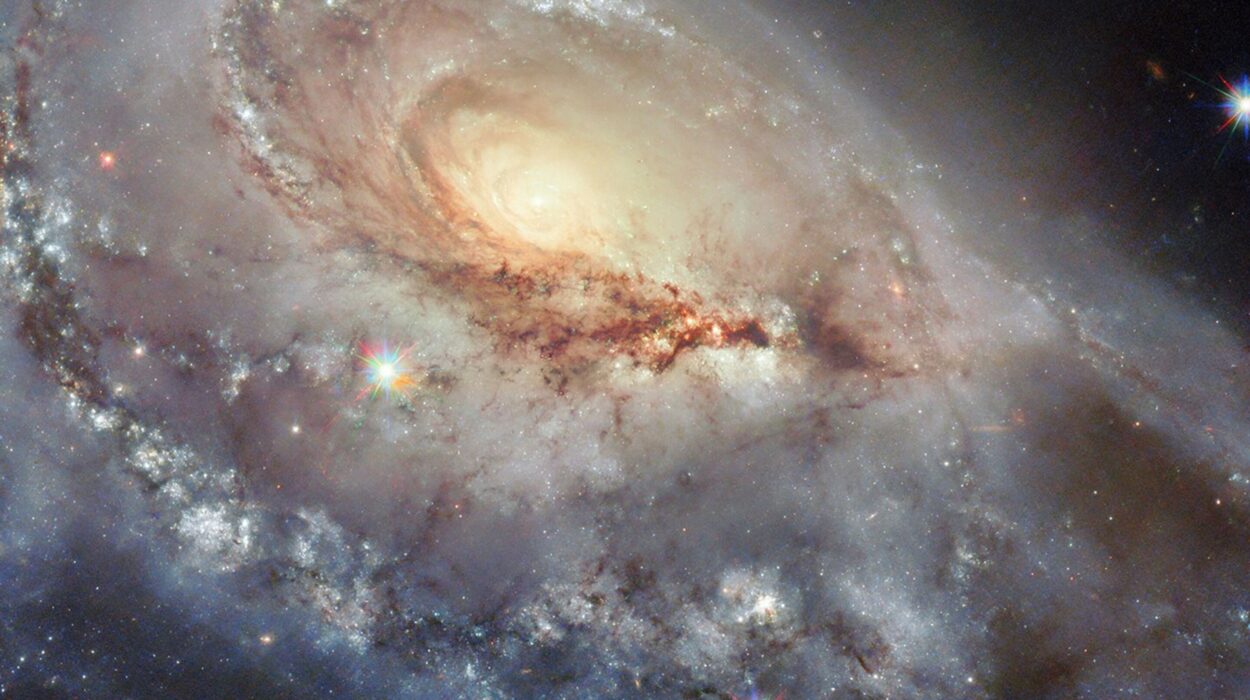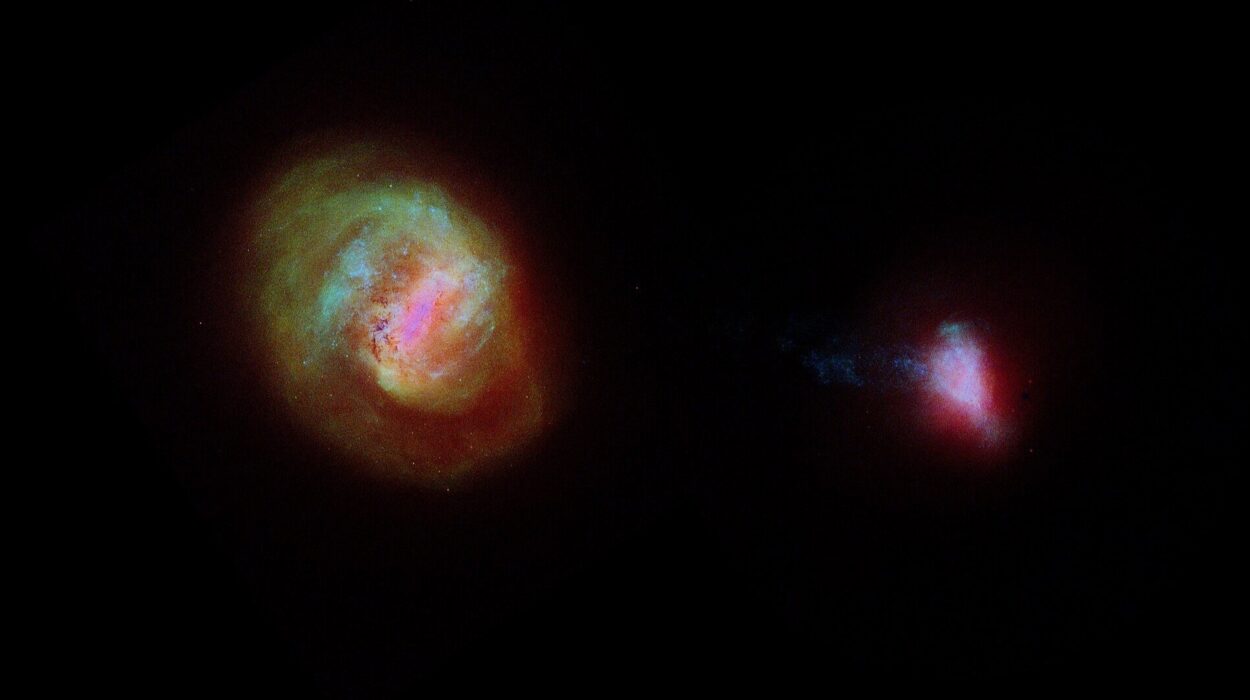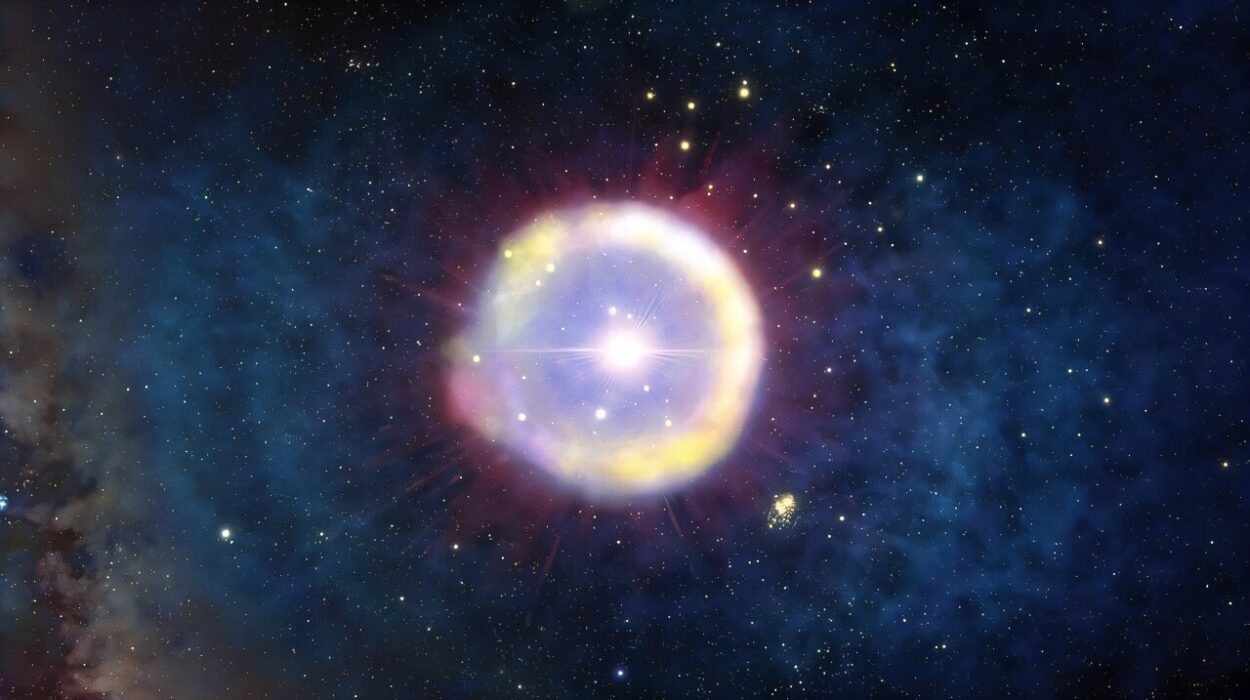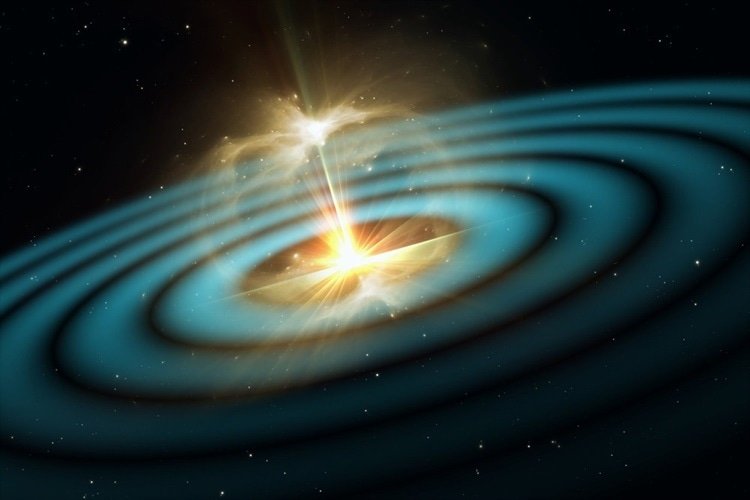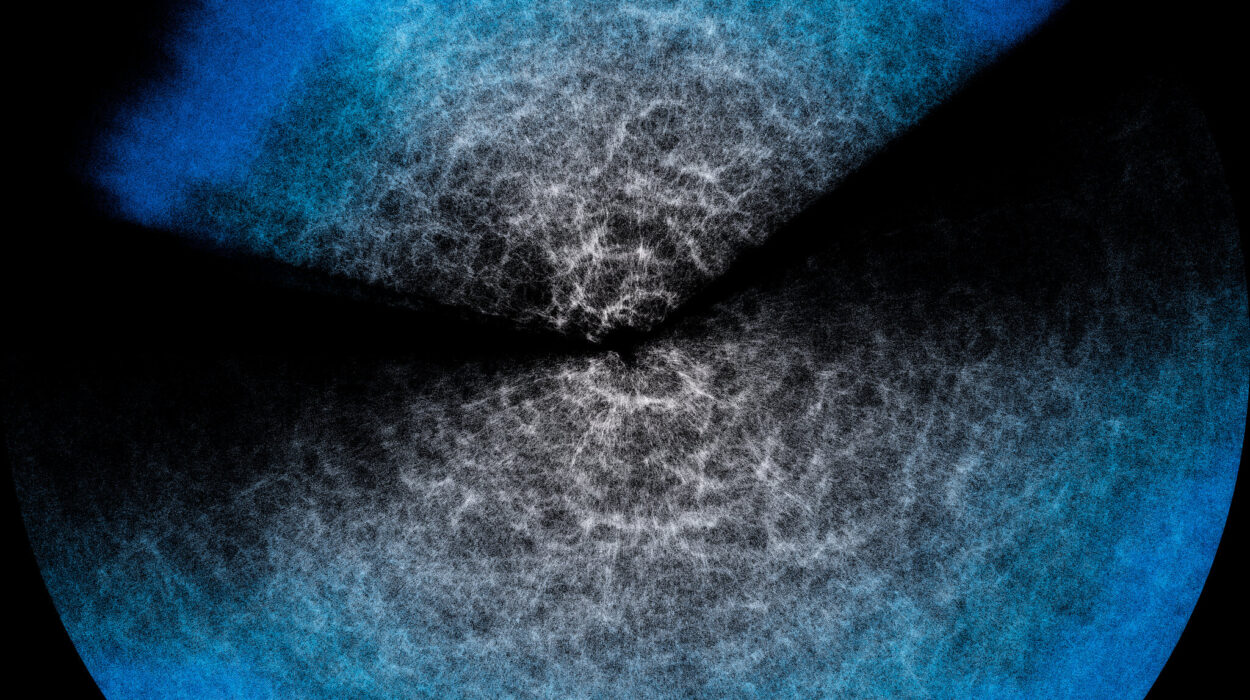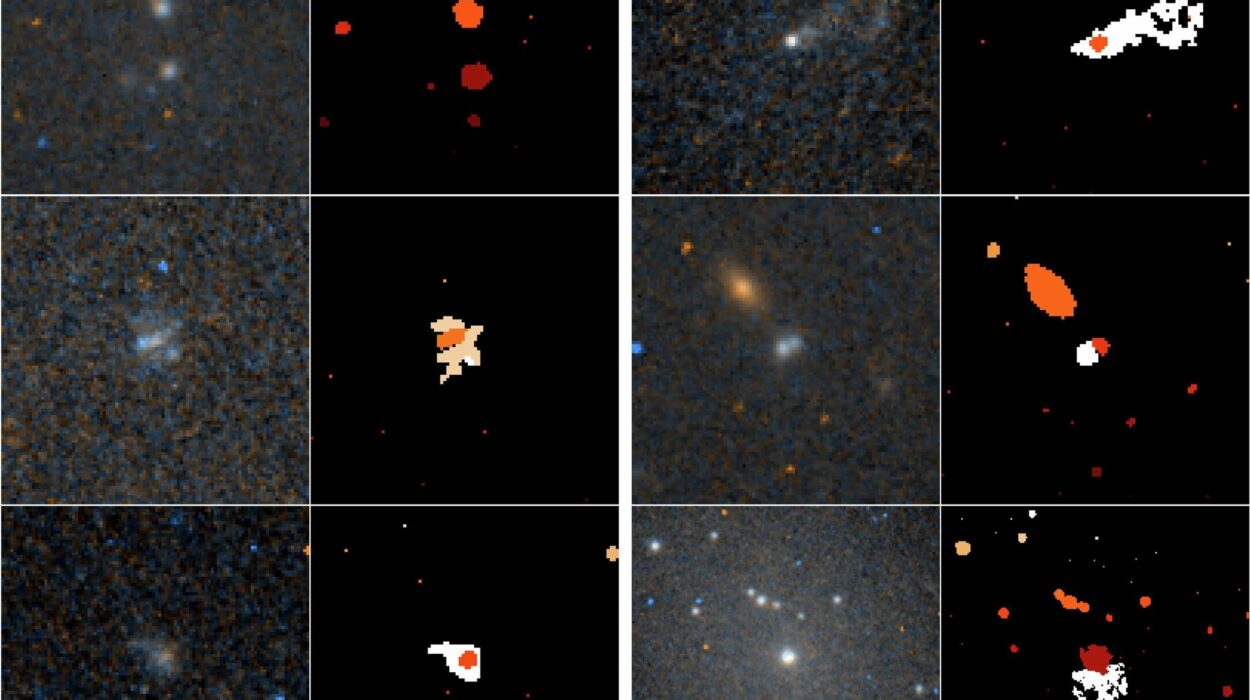Every star is born to die. The Sun, warm and golden, the giver of light and life to our planet, is no exception. In roughly five billion years, its nuclear heart will exhaust the hydrogen that fuels its fire. When that happens, the balance between gravity pulling inward and radiation pushing outward will collapse. The Sun will swell into a red giant, devouring Mercury, Venus, and possibly Earth, before shedding its outer layers into space like a vast cosmic blossom.
What remains will be its naked core—a white dwarf. Though no larger than Earth, this remnant will hold nearly half the Sun’s mass, its gravity immense, its light faint, a fading ember of what once illuminated the solar system.
For centuries, astronomers believed that such stars marked a quiet end—a stellar afterlife of stillness and silence. The planets that once orbited them, if they survived at all, would drift in stable, frozen orbits around a dead sun. But the universe, as it often does, had a different story to tell.
The Discovery That Defied Expectation
In a corner of the sky 145 light-years away, astronomers made an extraordinary discovery. Around a white dwarf known as LSPM J0207+3331, they found not the calm graveyard of a planetary system—but a scene of ongoing chaos.
This white dwarf, ancient and faint, roughly three billion years old, is still devouring the remains of its lost worlds. Using the W. M. Keck Observatory on Maunakea in Hawaiʻi, researchers analyzed its light and uncovered the fingerprints of 13 heavy elements—the unmistakable chemical traces of rocky material.
These metals could not have come from the star itself. They were the remains of something solid—an asteroid, a dwarf planet, or even fragments of an ancient world—that had been torn apart by gravity and was now falling into the white dwarf’s surface.
“It’s like watching a cosmic autopsy,” said Érika Le Bourdais, lead author of the study from the Trottier Institute for Research on Exoplanets at the Université de Montréal. “We’re seeing a star long past its prime still interacting with the planetary system it once nurtured. It shouldn’t be happening—but it is.”
The Forensic Clues of a Fallen World
Spectroscopy—the art of decoding the colors of light—revealed the details. Each element leaves a unique signature, a spectral barcode etched in the starlight. The team identified the presence of magnesium, iron, silicon, and calcium—elements that make up rocky planets like Earth.
The quantity was staggering. According to co-author Patrick Dufour, the accreted debris must have come from an object at least 200 kilometers wide, roughly the size of a large asteroid or a small moon. “The amount of rocky material is unusually high for a white dwarf of this age,” he said.
This means something disturbed the system relatively recently—within the past few million years. Perhaps a distant planet shifted in its orbit, nudging a smaller body onto a fatal trajectory. The unlucky object spiraled inward, was shredded by tidal forces, and formed a glowing disk of dust and metal encircling the dying star. Slowly, the debris rained down, enriching the white dwarf’s atmosphere with the ashes of its once-living system.
The Star That Eats Its Children
In a sense, LSPM J0207+3331 is a cannibal star, feasting on the remains of its own offspring. For a long time, scientists assumed that when a star became a white dwarf, all motion ceased—that planetary systems were frozen forever in quiet stability. But discoveries like this have upended that view.
Astronomers now know that nearly half of all white dwarfs show traces of heavy elements, signs that they are still accreting material long after their deaths. This means their planetary systems are not static—they continue to evolve, destabilize, and sometimes collapse billions of years after the parent star’s demise.
“This discovery challenges our understanding of planetary system evolution,” said Le Bourdais. “The ongoing accretion at this stage suggests that planetary remnants can survive and still undergo dynamical changes far longer than we expected.”
The Mystery of Delayed Instability
How could such ancient chaos still unfold around a star so old? Astronomers propose a process known as delayed planetary instability.
When a star sheds its outer layers and becomes a white dwarf, it loses a significant portion of its mass. This mass loss weakens its gravitational grip, subtly altering the orbits of its planets. Over time, gravitational tugs between multiple planets can destabilize their paths. Slowly, silently, the system unravels.
It might take billions of years, but eventually, one unlucky object—perhaps an asteroid or minor planet—is thrown off balance. Like an apple falling from a branch, it plunges toward the white dwarf, only to be ripped apart and consumed.
As John Debes of the Space Telescope Science Institute explained, “Something clearly disturbed this system long after the star’s death. There’s still a reservoir of material capable of polluting the white dwarf, even after billions of years.”
Searching for the Hidden Culprit
The question now is: what triggered the recent chaos? Did a surviving giant planet—something like Jupiter—still orbiting the white dwarf, set this disaster in motion?
Detecting such distant, cold planets is extremely difficult. But astronomers are not giving up. The ESA’s Gaia space telescope is mapping the precise motions of billions of stars, and it may detect subtle wobbles in LSPM J0207+3331 caused by an unseen companion’s gravitational pull.
Meanwhile, NASA’s James Webb Space Telescope could take a closer look at the debris disk in infrared light, searching for hints of hidden planets or additional fragments. “Future observations may help distinguish between a planetary shakeup or a close encounter with another star,” Debes said. “Either way, something dramatic happened here.”
The Echoes of a Lost System
To grasp the magnitude of this discovery, imagine our own solar system in the distant future.
Five billion years from now, when the Sun collapses into a white dwarf, will there still be remnants of Earth and Mars orbiting in the cold darkness? Could some surviving asteroids, nudged by the gravitational whispers of Jupiter or Saturn, spiral inward and meet their end in the Sun’s ghostly remnant?
If another civilization were to look at our dead star through a telescope, they might see the same signs—metal pollution, dust rings, the spectral fingerprints of a shattered world. They might read the story of Earth in the faint light of a white dwarf, long after humanity has vanished.
The system of LSPM J0207+3331 offers a glimpse into that possible future—a haunting reflection of our destiny written in the remnants of another sun.
What the White Dwarfs Are Teaching Us
White dwarfs are no longer just stellar tombstones; they are cosmic archaeologists. By studying the debris they accrete, astronomers can reconstruct the composition of exoplanets that once orbited them.
In fact, many polluted white dwarfs show signatures similar to the rocks of Earth—evidence that rocky planets are common in our galaxy. Each one is a fossil record of a lost world, a chemical echo of an ancient planet torn apart by gravity.
The more we study these stellar remnants, the more we understand how planetary systems form, evolve, and die. And in doing so, we also learn about the resilience of matter—the way worlds can crumble, yet their essence endures, etched forever in the light of dying stars.
The Universe Never Sleeps
The story of LSPM J0207+3331 reminds us of a profound truth: the universe is never idle. Even in death, stars remain active participants in the grand cosmic dance. Gravity, time, and motion continue their endless interplay, shaping and reshaping the fabric of existence.
Our Sun’s eventual transformation into a white dwarf will not mark the end of our story, but rather the beginning of another—a quiet, ghostly afterlife where echoes of Earth may still circle the cold remains of the star that once gave us life.
Somewhere, billions of years from now, another civilization may peer across the cosmos and study our long-dead Sun, just as we study LSPM J0207+3331 today. They will read in its faint light the tale of our solar system—the rise of worlds, the birth of life, and the final scattering of its dust into eternity.
The Endless Cycle
Stars die, but their matter does not vanish. The atoms torn from destroyed planets drift into space, to be woven again into new stars, new planets, perhaps new life. The universe recycles everything. Even in endings, there are beginnings.
That is the lesson of the white dwarf’s feast—the persistence of transformation. A star may fade, its worlds may crumble, but the story of life and matter continues, eternally reshaping itself under the laws of physics and the poetry of time.
In the end, LSPM J0207+3331 is not just a dying star. It is a reminder that nothing truly ends in the cosmos—only changes form.
And perhaps, somewhere in that endless cycle, something like us will rise again, look up at the sky, and wonder what happens when the stars die.
More information: Érika Le Bourdais et al, Tracing Planetary Accretion in a 3 Gyr old Hydrogen-rich White Dwarf: The Extremely Polluted Atmosphere of LSPM J0207+3331, The Astrophysical Journal (2025). DOI: 10.3847/1538-4357/ae0ace iopscience.iop.org/article/10. … 847/1538-4357/ae0ace
